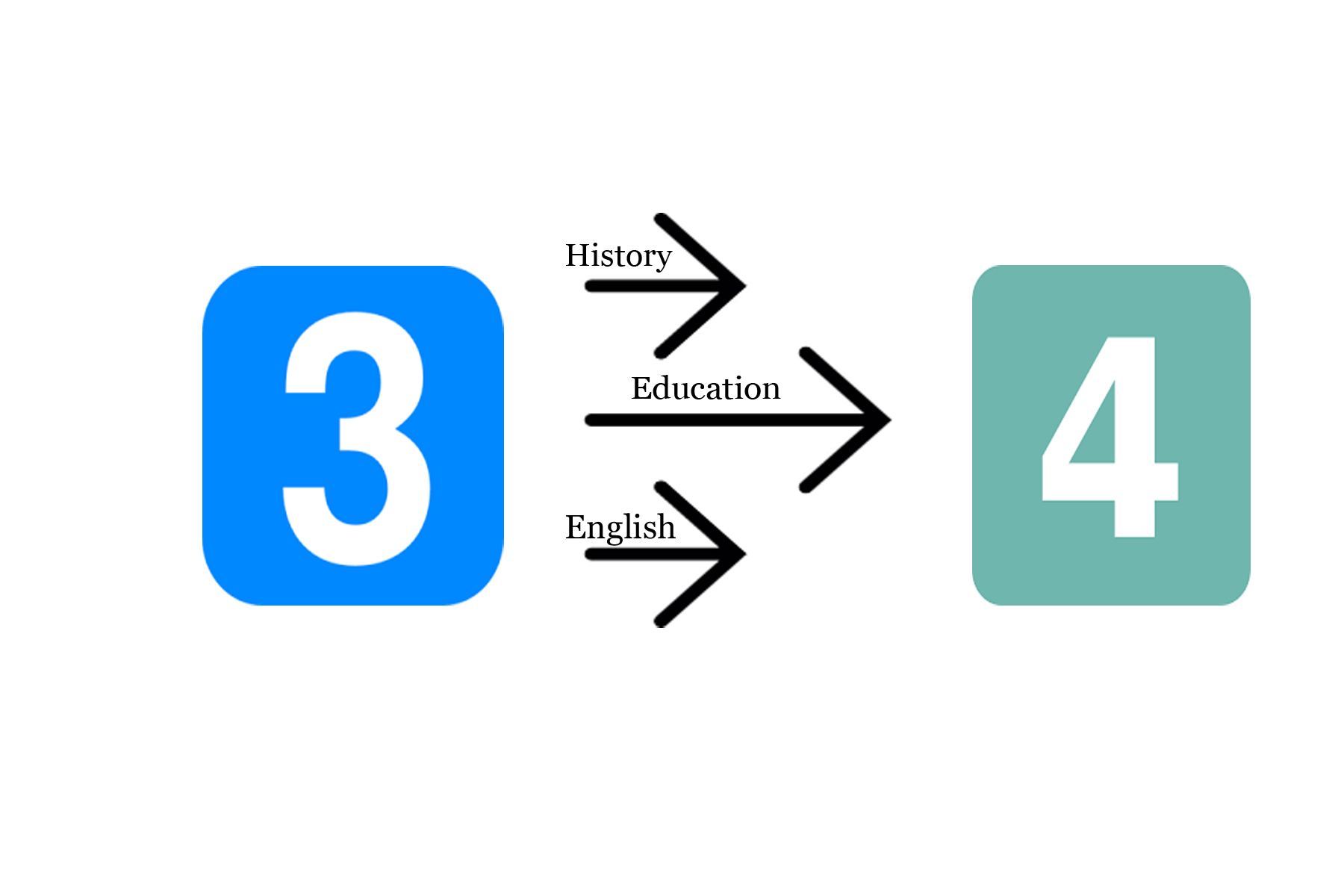 To provide students with a more in depth learning experience, the English, history, and education departments are currently transitioning from a 3-hour to a 4-hour curriculum.
To provide students with a more in depth learning experience, the English, history, and education departments are currently transitioning from a 3-hour to a 4-hour curriculum.
The transition does not simply mean an added hour to current courses but instead a full update of their course bulletins. A few new courses will be introduced, some will be retired, and others will be merged or extended.
However, the core curriculum will remain largely the same. These departments aim to use the extra hour in the classroom to provide students with greater focus and detail.
The faculty behind the changes in these departments spoke on the possible benefits of a 4-hour system.
“For [the English department], one of the main advantages is that currently our students are writing significantly long papers at the end of the term, for three or four different classes. With fewer, more focused classes, [students] may actually get a better learning experience by being able to focus on fewer papers and be more thorough,” said David Summers, department chair and professor of English.
History department professors also expect the curriculum change to enhance their students’ writing.
“The lecture part will be pretty similar, but it means more discussion and more student writing,” said Andrew Carlson, department chair and professor of history. “We [the history department] have not typically been a two draft department; [students] do one draft. However, literature seems to suggest that two drafts improves learning.”
The education department began planning the transition in the spring of 2011 while updating the next year’s course bulletin. The goal of the program is to create a curriculum suited to developing the best Capital education students.
“[The transition] allows for more depth versus breadth … more focus rather than content coverage,” said Bradley Conrad, assistant professor of education. “Many of our courses have a field component, and the additional hour gives us more flexibility. The larger space of time also lets us keep momentum in activities and discussion.”
For the history department, the extra time in the classroom will allow professors to cover a greater scope of information and to attend to periods that have been neglected in the past.
“In HIST-121 [U.S. history: 1865-present], it’s hard for me to get past the Cold War because we just run out of time. I know a lot of our courses have that problem. [The increase] means more detail and more classes devoted to more recent decades,” Carlson said.
The College Curriculum Committee, a group of faculty from various departments, annually assesses curriculum changes and determines whether any conflicts exist between departments. Once the changes are approved, the course bulletin is updated.
While the history department is currently awaiting approval for the transition, the education department has received approval and will begin implementing the curriculum in the fall of 2016. The English department has also been approved; however, it suspended the transition until the 2017-2018 academic year.
“We’re waiting to see what other departments do or if a more university wide policy is put in place by the administration,” Summers said. “We have been hearing that some of the places we get transfer students from are transitioning form four hours to three, and we don’t want to make it difficult for students to come here when they want to.”
As the English, education, and history departments join the many others already on a 4-hour curriculum, the political science department is considering following suit.
“Political science is in favor of a 4-credit hour approach based on the benefits we have observed from our economics colleagues,” said Sean Walsh, assistant professor of political science. “We feel that 4-credit courses offer greater depth, both in terms of course content and classroom discussion. Additionally, students will need substantially fewer courses to complete their program.”
With more departments increasing their curriculum, the semester course load for students, especially those with multiple majors or minors, will increase as well.
This could present a problem for students who are taking 17 or 18 hours under the current system, since they would instead be taking 19 or 20. The university considers the traditional full-time course load to be between 12 and 18 hours and taking more results in additional charges.
The curriculum committee is also considering an increase to the full-time hour limit, as none of the transitioning departments intend for the shift to penalize their students.
Still, the university does not want such a shift to encourage unhealthy learning habits. A 4-hour credit class requires not only more time in the classroom but also an increase in supplemental work and studying outside the classroom.

